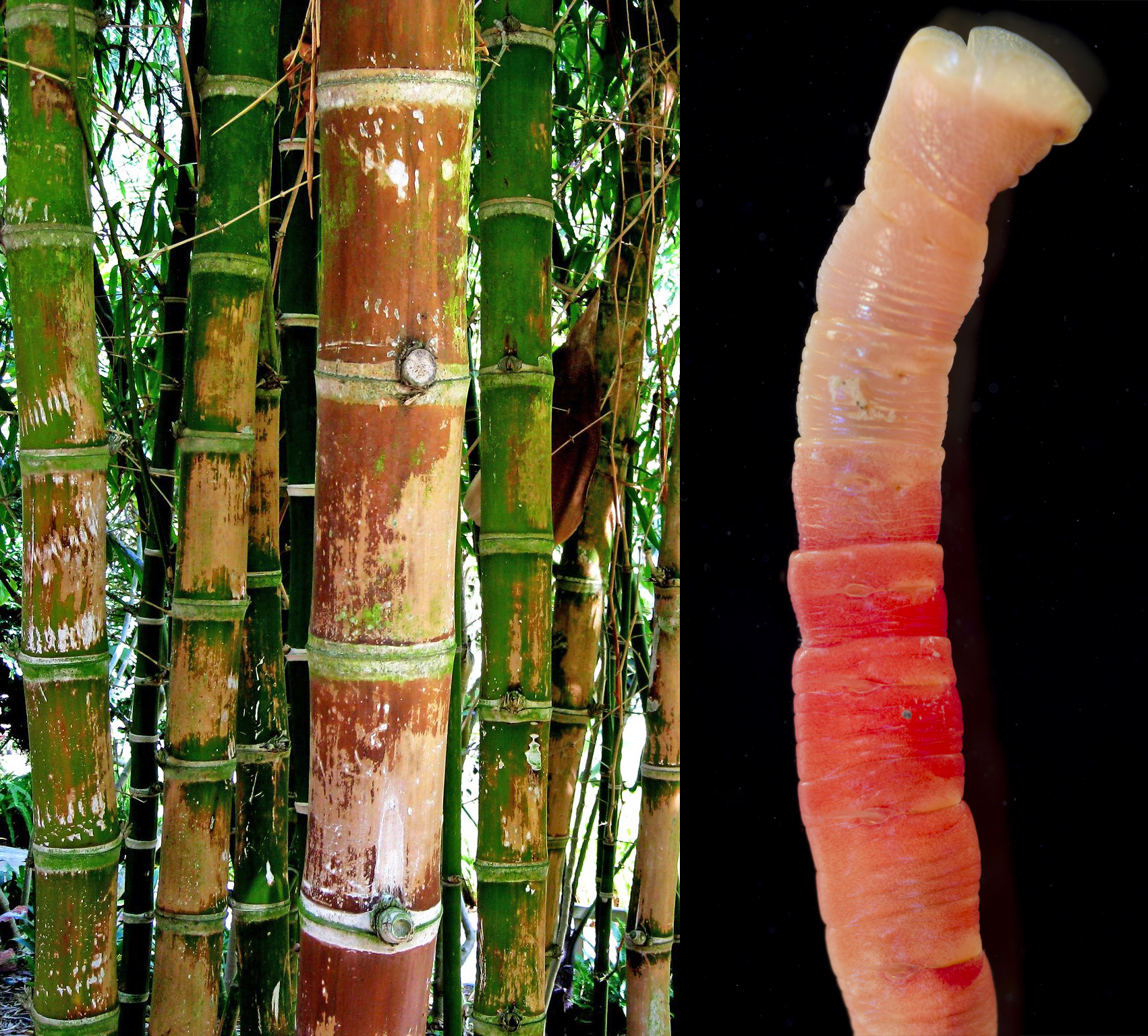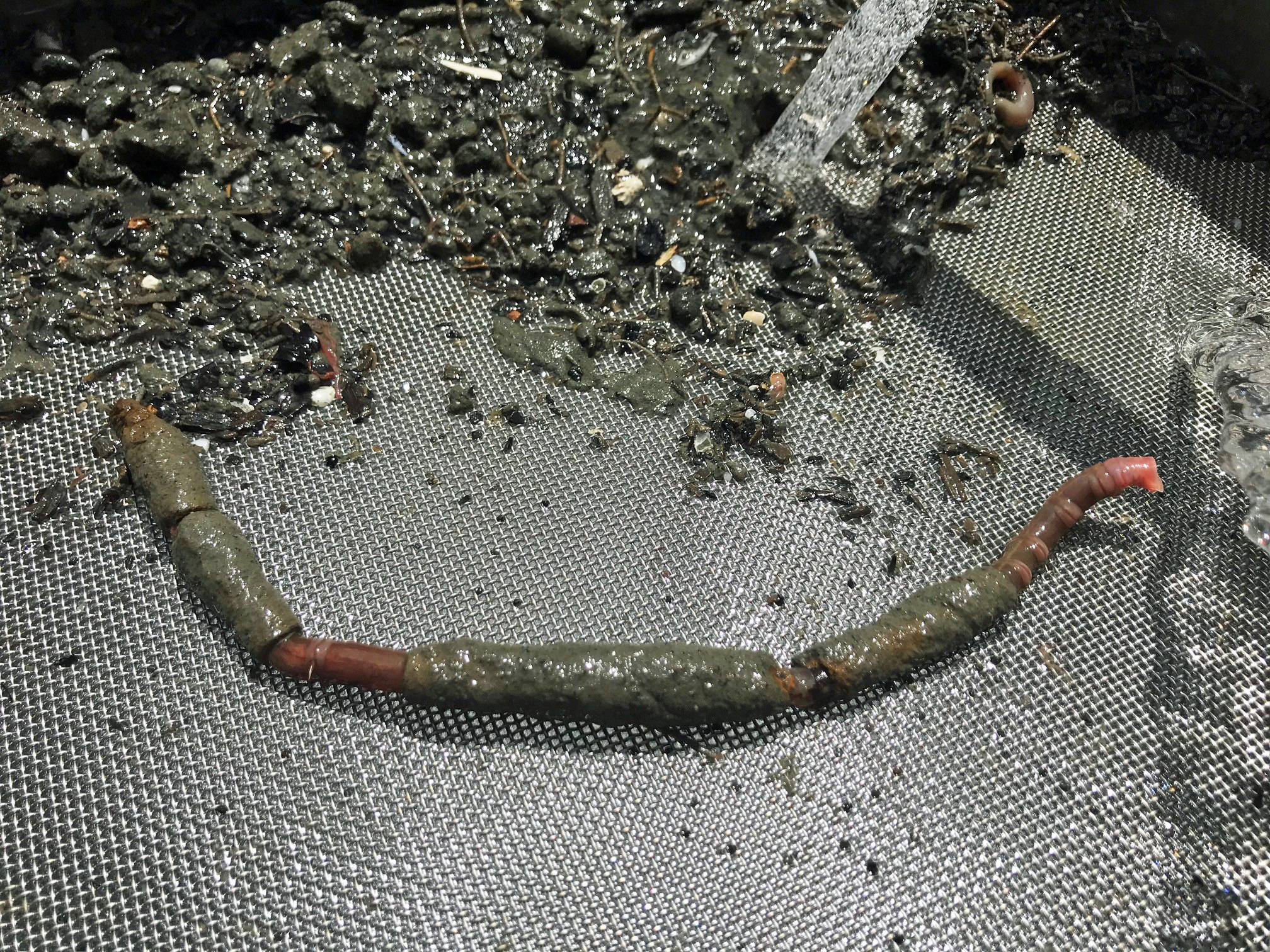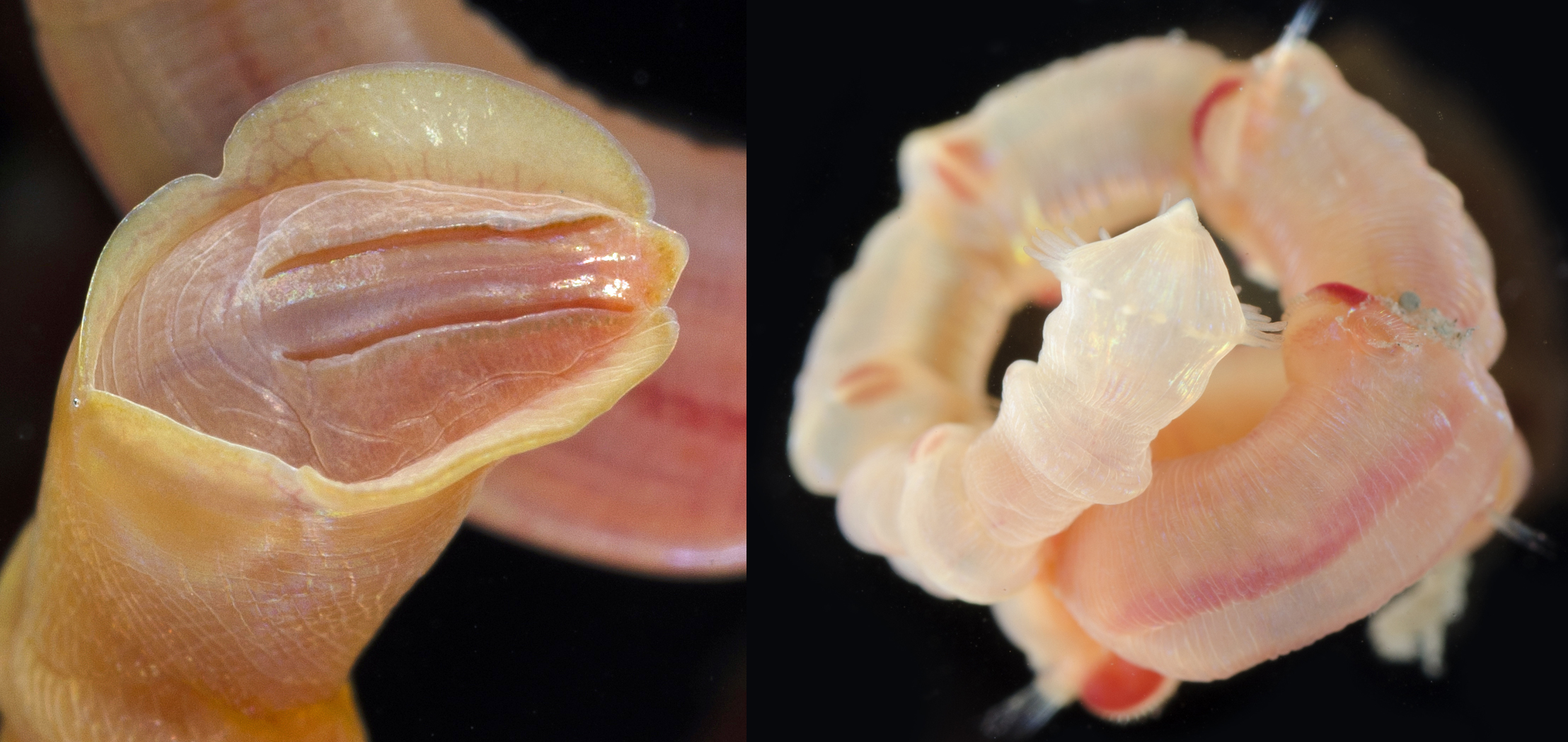You might have heard the old adage about bamboo: “The first year it sleeps, the second year it creeps, the third year it leaps.” Well, in Puget Sound, we have some “bamboo” that really does creep.
Since June encompasses three outdoorsy occasions (Gardening Week, Great Outdoors Month, and the summer solstice, finally!), let’s get our hands dirty and talk about an incredible group of animals that resemble a truly incredible plant: the bamboo worms.
Garden variety
It’s easy to see where bamboo worms get their name… their elongated body segments appear to telescope into each other like bamboo’s precisely-jointed stalks. Similar to the widely-distributed plant, bamboo worms occur worldwide in a range of depths and substrate types. In some places (not Puget Sound, thank goodness), they can number over 12,000 per square meter — even more prolific than that pesky running bamboo in my yard!
This 15 cm
Lucky break
Unlike bamboo, which is known for its strength, the worms’ bodies are fragile, easily breaking apart where the segments meet. Luckily, their skin can produce a fibrous organic sheath out of mucus, binding the sediment around their soft bodies into protective casings. These tubes take different forms — species in the genus Nicomache make hard sand tubes, while Praxillella and Chirimia prefer thick, silty mud — but they all help the worms bend without reaching their breaking point.
Level-headed
Speaking of bending, bamboo worm tubes can be U-shaped, J-shaped, or vertical, with the worm’s head either pointing straight downward or wrapping back toward the surface. The heads themselves are often flattened into strange-looking cephalic plates. The rear end can also be flat, or look more like a funnel, a spoon, or a flower. In fact, one of my former lab-mates referred to bamboo worms affectionately as “flower-butts.” Left: The head of Praxillella pacifica, a bamboo worm from Puget Sound, is a flat plate with a pair of sensory grooves called nuchal organs. Right: A bamboo worm’s flower-like rear end.
Hoedown
A flat or scoop-shaped head (or frilly bum) is useful for many purposes, including “hoeing” food-rich surface sediment into the tube opening, using the entire body as a food plunger, or plugging the end of the tube when it's full so that unwanted debris stays out. Bamboo worms are incredibly tidy, brushing leftover particles from their tubes with their body hairs, called chaetae. And they never poop where they scoop — the two ends of their tubes are far apart, so the fecal mound doesn’t get mistaken for a tasty snack.
How does your noggin grow? This bamboo worm’s tiny pointed head
Losing face
Despite its best efforts, a bamboo worm might end up losing its head (or its butt) to predation or the shear stress of benthic life (see what I did there?). This may sound incredibly inconvenient to the worm, but not to worry — like many marine segmented worms, or polychaetes, bamboo worms can regenerate missing segments, including heads AND butts. It’s the taxonomists who suffer, because it’s helpful to have both ends intact to identify this difficult group.
And what does this taxonomist say when she sees lots of bamboo worm fragments in her sample, each sowing a little seed of doubt in her mind?
Aw… SHOOT!
Critter of the Month
Dany is a benthic taxonomist, a scientist who identifies and counts the sediment-dwelling organisms in our samples as part of our Marine Sediment Monitoring Program. We track the numbers and types of species we see to detect changes over time and understand the health of Puget Sound.







